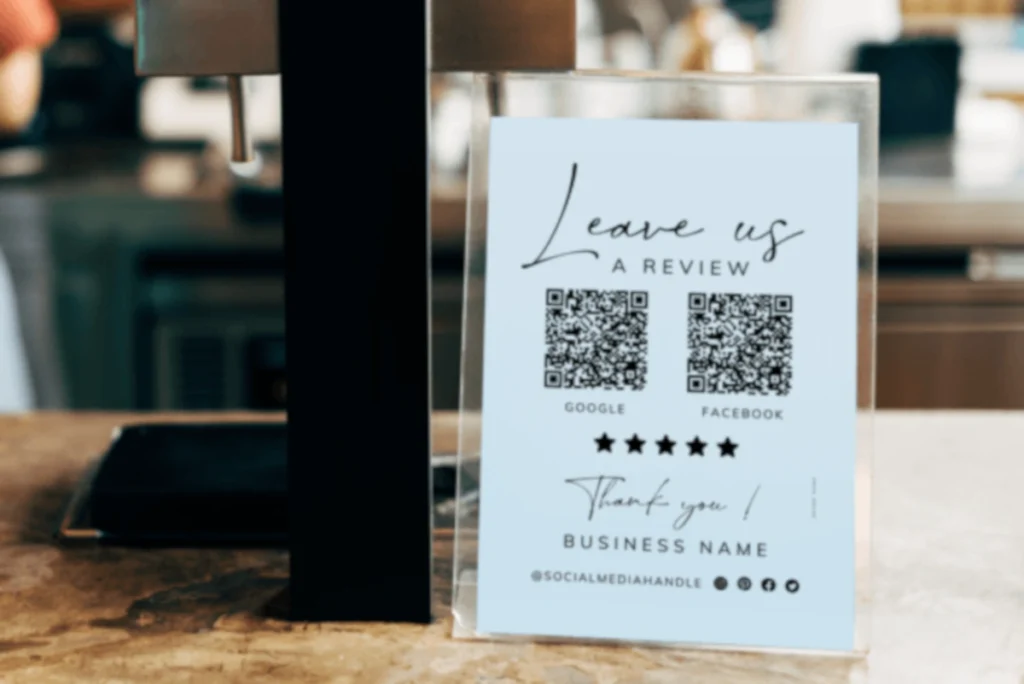Introduction
QR codes are everywhere. From restaurant tables to event posters, they’re the seamless bridge between the physical and digital world. But with convenience comes risk. As QR codes become a staple in marketing, ticketing, payments, and even public safety campaigns, their misuse is growing too. And most people have no idea how easily a scan can go wrong.
This article dives deep into the unseen risks, essential protections, and legal requirements surrounding QR codes. Whether you’re a consumer, marketer, or business owner, here’s what you need to know.
5.1 QR Code Security Basics
The Hidden Dangers of a Simple Scan
What could go wrong by scanning a black-and-white square? Plenty. QR codes might look harmless, but beneath the surface lies the potential for major threats. A single scan can redirect you to a malicious website, trick you into entering sensitive data, or initiate malware downloads onto your device.
Common vulnerabilities include:
-
Malicious URLs: Redirecting to phishing or fake login pages.
-
Auto-download malware: Triggering app or file downloads without the user’s awareness.
-
Fake payment gateways: Especially dangerous in public spaces or when used in financial campaigns.
Because most QR codes mask the destination URL, users have no idea where they’re being sent until it’s too late. Cybercriminals bank on that.
Password-Protected and Encrypted QR Codes
Not all QR codes are created equal. Some are designed with security in mind.
Encrypted QR codes add an extra layer of protection by encoding the data in a way that can only be read by authorized devices or software. This makes them ideal for internal enterprise use, secure logins, or protected document sharing.
Password-protected QR codes, meanwhile, require the user to enter a password before the data or website is revealed. While rare in consumer use, they are growing in popularity for confidential data sharing and secure forms.
Encouraging Users to Scan Safely
Ultimately, secure technology means nothing without informed users. Most people will scan a QR code with zero hesitation. That’s why education is key.
Tips to encourage safe scanning:
-
Avoid scanning QR codes from unknown sources or suspicious locations.
-
Use a QR scanner that previews the destination URL.
-
Look for branded or custom QR codes—these are harder to spoof.
-
Don’t scan codes with spelling errors, blurry prints, or that appear to be pasted over something else.
Even a basic understanding of QR safety can prevent a catastrophic mistake. Businesses that deploy QR codes should clearly explain what users can expect after scanning.
5.2 Data Privacy and Regulatory Compliance
GDPR and QR Codes: A Legal Grey Area
While QR codes themselves are just a bridge to information, they often link to forms that collect personal data. Under GDPR (General Data Protection Regulation), that means QR campaigns must treat the linked page as a data collection point.
If your QR code leads users to provide their email, name, location, or device info, then you’re processing personal data. That comes with big responsibilities.
GDPR compliance for QR code tracking means:
-
Clear explanation of how data will be used.
-
Explicit consent before collecting any personal data.
-
An easy way for users to opt out or request deletion.
-
Secure storage and transfer of the data collected.
Brands that neglect these steps risk fines, negative press, and loss of customer trust.
Secure Handling of User Data
QR code marketing often involves sending users to a landing page, signup form, or payment gateway. These pages need to be as secure as the QR codes themselves.
Essential security practices include:
-
SSL certificates (HTTPS) on all linked pages.
-
Encrypting form submissions.
-
Minimizing data collection to only what’s absolutely necessary.
-
Not storing data longer than needed.
If your campaign captures emails or phone numbers through QR code forms, make sure your back-end systems comply with best practices in encryption and access control.
Being Transparent with Users
Transparency is a superpower in a world that’s increasingly skeptical of data collection.
Letting users know upfront what will happen when they scan a QR code builds trust. Use language like:
-
“Scan to receive your discount. No personal info required.”
-
“This QR code leads to a form where your email is requested.”
-
“Your data will not be shared with third parties.”
Combine that with a visible link to your privacy policy and you’ll stand out for the right reasons.
5.3 Scam Prevention and User Education
Fake QR Codes Are on the Rise
It sounds like something from a spy movie, but it’s happening in real life: cybercriminals are creating fraudulent QR code stickers and placing them in high-traffic areas—like parking meters, public signs, or restaurant tables.

The fake code covers the real one, redirecting victims to scam websites. The worst part? These fakes are often printed with such precision that they appear completely legitimate.
Examples of QR scams include:
-
QR codes on public parking meters that lead to fake payment sites.
-
Restaurant menu QR codes that capture login info.
-
Posters with malicious codes promising free giveaways.
Best Practices for Businesses
If you deploy QR codes in the wild, take proactive steps to ensure they’re safe:
-
Brand your QR codes: Use custom colors, logos, or frames that make duplication obvious.
-
Laminate and protect: Place them behind tamper-proof casings or under glass.
-
Monitor and inspect: Regularly check public-facing QR placements.
-
Include visual instructions: Add a line like “Scan to open our official site: www.brandname.com“
For critical applications (payments, login portals, etc.), consider using dynamic QR codes that expire or rotate regularly to prevent abuse.
Raising Awareness Among Users
Security awareness campaigns shouldn’t be boring. Create eye-catching infographics or short videos showing how to scan safely. Topics might include:
-
How to spot a fake QR code.
-
Why you should preview links before clicking.
-
What to do if you scanned a suspicious code.
Even a few seconds of education can go a long way in preventing QR-related fraud.
Industries at Risk (and How They Can Stay Safe)
Hospitality: Hotels and restaurants using QR menus must inspect printed signage regularly and train staff to spot tampering.
Healthcare: Patient check-ins and contactless forms often use QR codes. These should always be encrypted, and privacy policies displayed clearly.
Retail: From product labels to checkouts, QR codes offer marketing opportunities—but also attack vectors. Always test the full user journey from scan to sale.
Education: Schools and universities using QR attendance or access systems must balance ease of use with security protocols.
Final Thoughts: QR Code Convenience Comes with a Cost
The QR code revolution isn’t slowing down. It’s expanding into digital payments, inventory tracking, personal authentication, and more. But as the uses grow, so do the threats.
The good news? With the right awareness and safeguards, QR codes can be both convenient and secure. Whether you’re a marketer tracking engagement or a commuter scanning a timetable, the rules are the same:
-
Know what you’re scanning.
-
Understand where it’s taking you.
-
Be alert to anything unusual.
The line between helpful and harmful is thinner than ever. But knowledge is your best defence.
